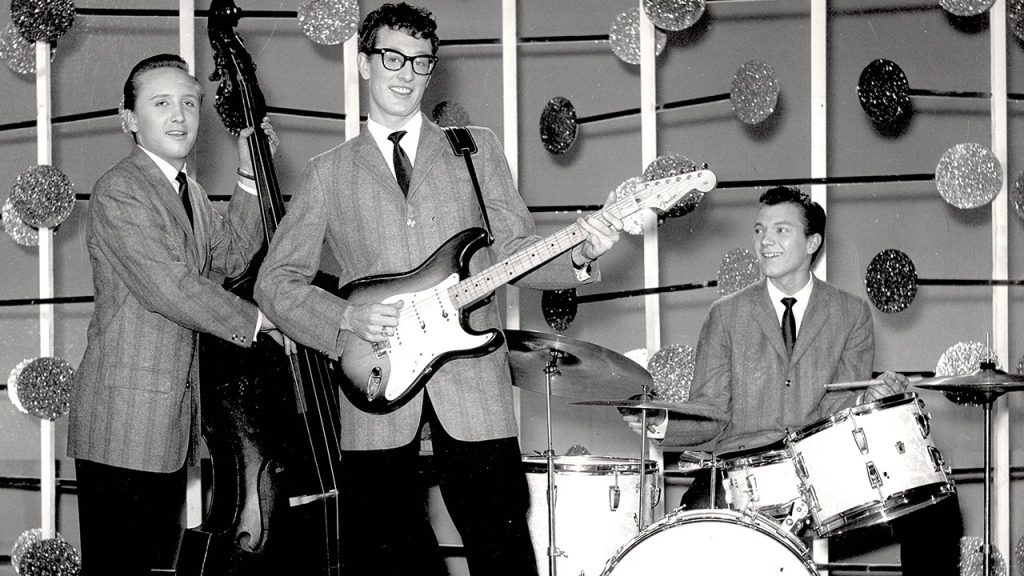Legendary American singer and songwriter Buddy Holly, born Charles Hardin Holley on September 7, 1936 in Lubbock, Texas, began his musical journey at a young age. Influenced by African American rhythm and blues, country music, and gospel, Holly learned to play multiple instruments and eventually developed a style of playing that became his trademark. His big break came when his band opened for Bill Haley and his Comets, leading to a contract with Decca Records. Holly formed his own band, the Crickets, and released several successful songs, including “That’ll Be The Day.”
In 1958, Holly married Maria Elena Santiago and began a solo tour after splitting with the Crickets. Tragically, on February 3, 1959, Holly, along with J.P. “The Big Bopper” Richardson and Ritchie Valens, died in a plane crash shortly after takeoff from Mason City on a flight to Moorhead, Minnesota. Investigations attributed the crash to bad weather and pilot error, leaving Holly at only 22 years old at the time of his death. His headstone, featuring the correct spelling of his name, Buddy Holley, and his favorite guitar, serves as a memorial to his legacy.
Despite his untimely demise, Holly’s influence in music continued to be felt. Unissued recordings and compilations of his work were released in the 1960s, keeping his music alive for generations to come. His horn-rimmed glasses became iconic and easily recognizable, and his hometown of Lubbock, Texas, paid tribute to him with a “Walk of Fame” featuring plaques of various artists and a statue of Holly playing the guitar. Additionally, the Buddy Holly Hall of Performing Arts and Sciences opened in Lubbock in January 2021, further solidifying his place in music history.
Buddy Holly’s legacy as a rock and roll pioneer was marked by his unique style of playing and his ability to blend various musical influences into his work. His marriage to Maria Elena Santiago and his solo career after parting ways with the Crickets showcased his versatility as a musician. The tragic plane crash that claimed his life, along with Richardson and Valens, on February 3, 1959, marked a turning point in music history and became immortalized in the song “American Pie” by Don McLean.
The influence of artists like Elvis Presley was instrumental in Holly’s development as a musician, and his impact on the rock and roll genre cannot be understated. His contributions to music continued to be celebrated through re-releases of his work and the establishment of memorials in his honor. As a symbol of the enduring nature of his music, Buddy Holly’s presence in the music industry remains significant, cementing his status as a legendary figure in rock history.
The tragic end to Holly’s life serves as a reminder of the fragility of fame and the unpredictability of life. Despite his short 22 years on Earth, Holly’s impact on the music industry and popular culture as a whole has endured for decades. His enduring popularity and the dedication of fans and music enthusiasts have kept his memory alive through tributes, memorials, and continued appreciation of his body of work. Buddy Holly’s lasting legacy serves as a testament to the power of music and its ability to transcend time and generations.













